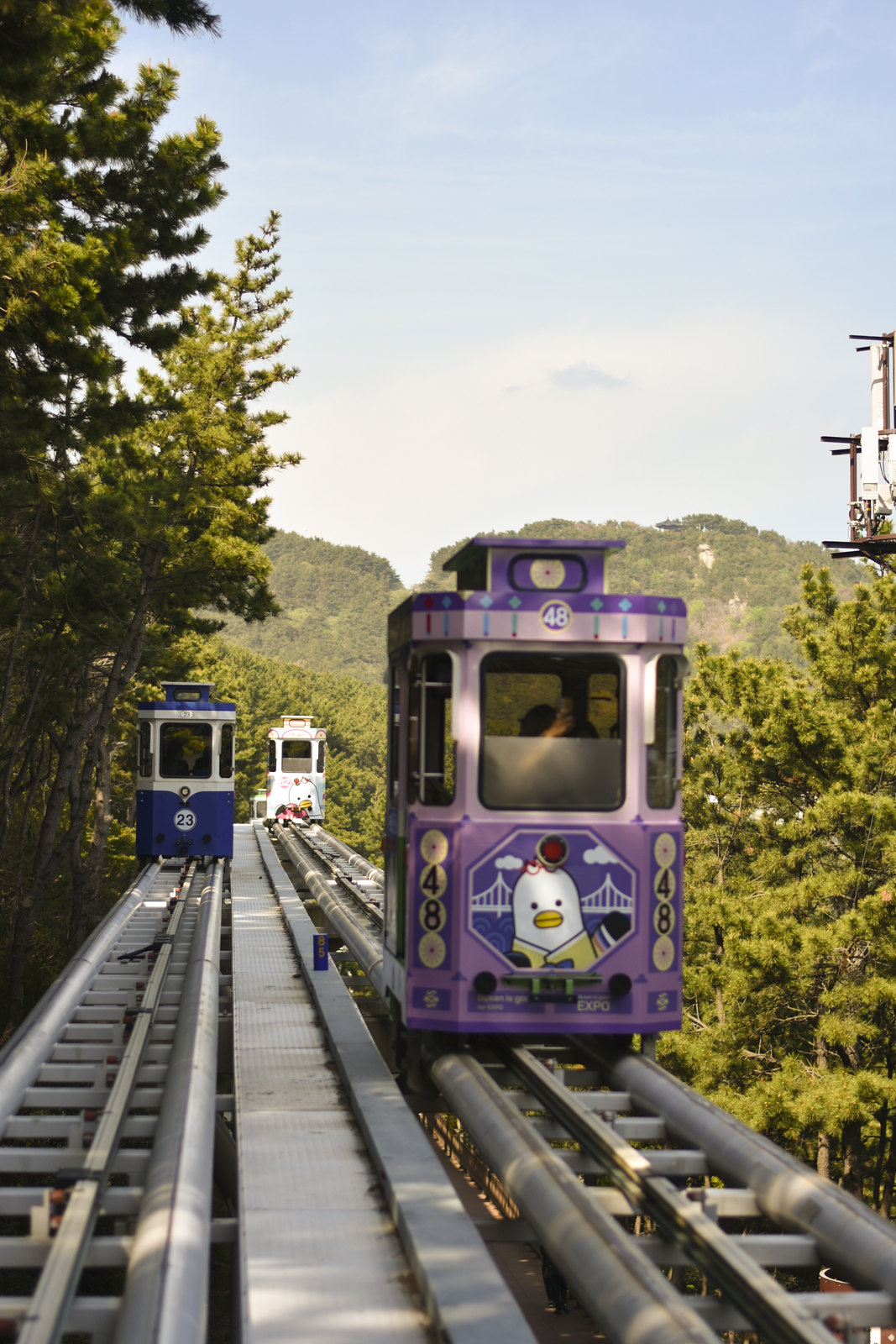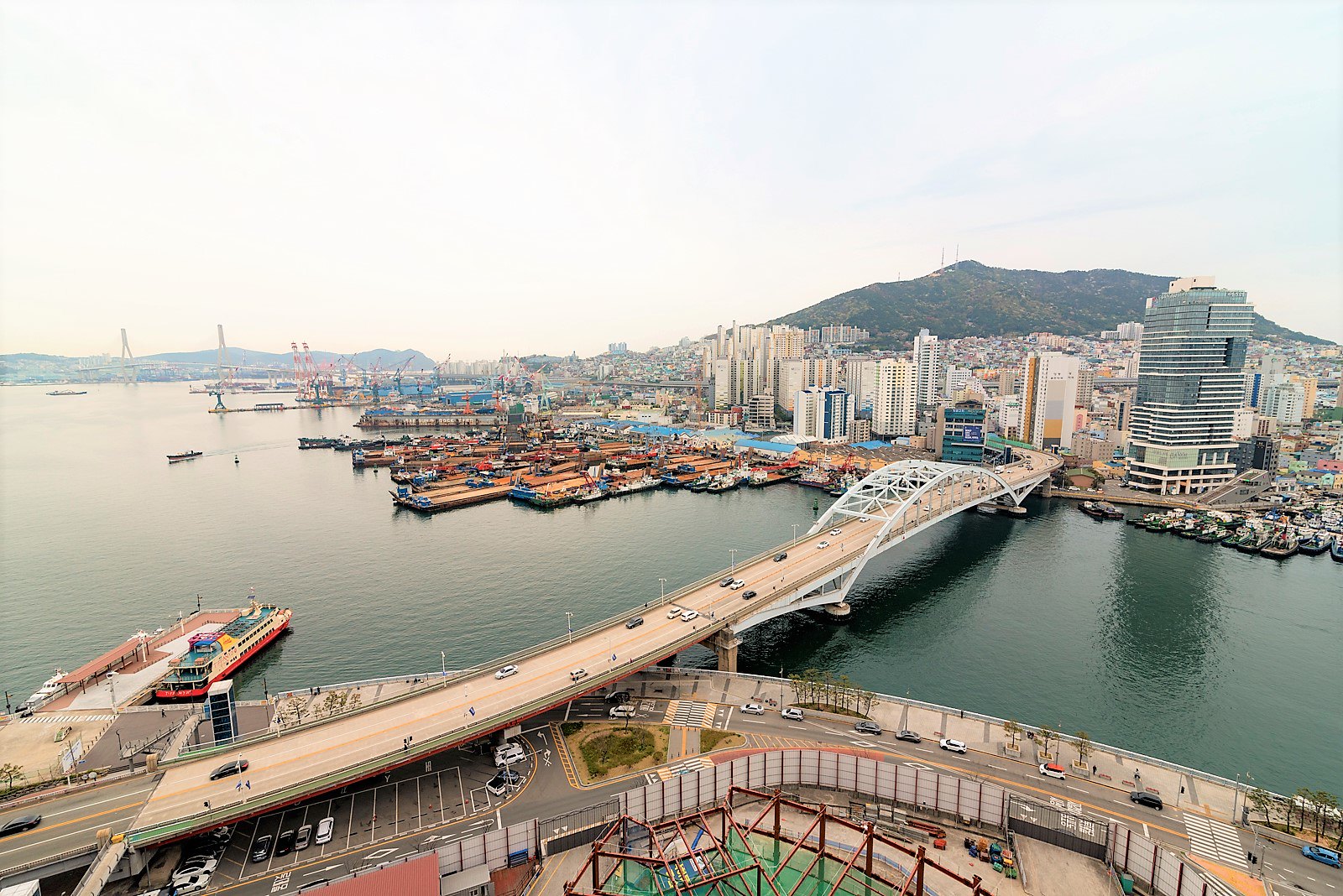Quick heads‑up, fellow travelers: Hit the Road Ket contains some affiliate links. Book through them and I earn a small commission at no extra cost to you – fueling my caffeine fix and future travels! For more details, see my Disclosures.
Busan (Koreans actually pronounce it, as Pusan) – the 2nd largest city in Korea is far more relaxed than Seoul. The city is very popular not only among foreign, but also Korean tourists. Its beaches make it a weekend destination for Seoulites.
The city’s history dates back to 4th century. from 15th century it became a trading port and Japanese settlements developed here. During the Korean war, Busan was one of the two cities not captured, therefore, many displaces persons came here (their settlements were spread out, including in the Gamcheon village) and it served, as the de facto capital at the time.
When thinking about Busan, I first thought it would just be a quick 1-day stop, however, as I continued my research, I understood how interesting the city is. So I am very happy I allocated 3 days here (although one was terribly rainy). Here is my 3-day itinerary for Busan according to our experience. If you like walking and seeing a lot of things, this is for you. If not – you will still get some ideas for what you prefer to do out of these spots.
Please, note that this itinerary doesn’t include the amusement parks or shopping. If you are interested in those, consider allocating time to them separately.
Useful Tips
Several tips for making your itinerary:
- Keep in mind that the city is very spread out. So you will need much more time to travel between places than you may anticipate.
- Public transport works quite well here, but the metro doesn’t go to many spots you will be visiting, so most of the time you will need a combination of metro and then bus.
- Where to stay in Busan depends on your interest and budget. There is no one central area staying in which would allow to easily get to sightseeing places. The most popular areas to stay are Seomyen, Nampo and Hauendae. The first is the cheapest, providing good transport links, the last is the most expensive, but you are near the beach. We stayed in the Seomyen area, which is cheaper and very lively especially during evening hours (btw. Hotels in Busan are cheaper than Seoul, except during very busy periods).
- Most places you will visit in Busan don’t need to be pre-booked. However, I highly recommend booking Blueline capsule, if you wish to do it. If you are visiting on a weekend or during the busy period of cherry blossoms or autumn foliage, you may not be able to get a ticket on the spot at all. Plus, pre-booking will not only allow you to avoid ticket queues. (more on that below).

Visit Busan Pass
The Busan Pass can be gotten for 24 hours (price: 49,000 won) or 48 hours (price: 69,000 won). There are mobile and card versions. As far as I understand there is no difference between the two, except you would have to pick up the card version.
If you are following this itinerary and not visiting any particularly expensive attractions, then you won’t be needing the Busan Pass.
Here is the attractions list on the official website. it would be preferable to get the Pass if you are doing several of the following most expensive activities:
- Busan Tour Bus (price: 15,000 won with discounts for youth and children) – note that it doesn’t work on Mondays and Tuesdays.
- Lotte World Adventure Busan (price: 47,000 won with discounts for youth and children)
- Busan Tower (price: 12,000 won)
- Busan X the Sky (price: 27,000 won)
- Songdo Cable Car (price: 15,000 won)
- Diamond Bay Yacht (price: 30,000 won)
- Ryan Holiday in Busan (price: 30,000 won)
- Blueline park train (price 1 way: 7,000 won, round trip: 12,000 won, day pass: 16,000 won). The Sky capsule, which is more expensive, is not included.
- Museum One (price: 18,000 won) – we actually visited this museum, due to the fact that there was a crazy rain on one of the days, so we needed an activity indoors. While the lights are lovely and we had a lot of fun, it may or may not be worth the price for you.

Your choice will of course depend on your priority activities in the city. With only 3 days in Busan, ours didn’t include the activities offered by the Pass (and were mainly free), so we skipped it.
If you would be paying the same price with Busan Pass or without, it’s preferable to get the pass due to convenience, as well as the fact that it also gives free coffee in some locations and other perks.
Short Summary of the Itinerary
Arrival Day
I am not counting this day in the itinerary. it would be more efficient, if you take a train either from Seoul or Gyeongju (however you arrange your itinerary) in the evening hours to avoid losing daylight time.
if you arrive early in the morning, you may be able to follow this itinerary from first day (although you would have to remove some things from it).
Here are all the tips about money, internet, etc.
This article gives detailed information about transport, including relevant cards.

Day 1 highlights – Gamcheon culture village, Songdo skywalk, Hanneul village, Nampo area
If you have only one day in Busan, you can either do this itinerary or alternatively combine some highlights, which are far from each other– Gamcheon Culture Village, Haedong Yonggungsa temple, Blueline park, Hauendae beach (you will find information about each of these below).

Day 2 highlights – Haedong Yonggungsa temple, Dalmaji-jil road, Cheongsapo observatory, Sky capsule, Haeundae
If you have only two days in Busan follow this itinerary strictly and you will visit most of Busan’s highlights.

Day 3 highlights – Beomeosa temple, Oryukdo skywalk, Igidae coastal walk, Museum One, Gwangali beach and bridge
If you have three days in Busan, this itinerary covers best highlights. If you are visiting during the cherry blossom season, I would suggest switching one of the places listed here with a half day trip to Jinhae.
Day Trips from Busan
- Gyeongju – If you don’t allocate separate days for staying here, you can do it as a day trip from Busan. See the details here.
- Daegu – if you haven’t allocated separate days to stay in Daegu, you can consider it as a day trip.
- Oedo island.
- Baekyangsa temple
- Tongdosa temple

